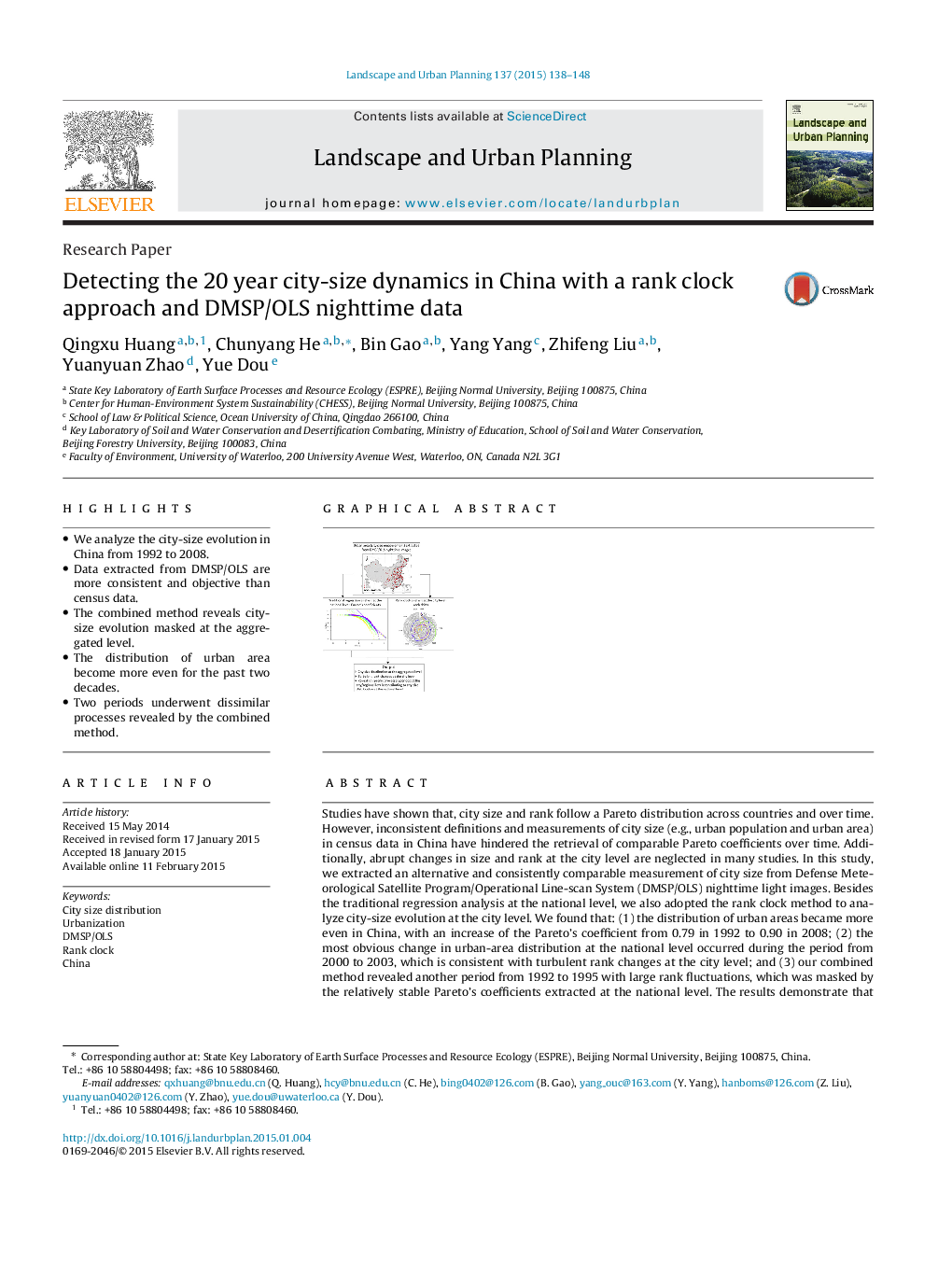| Article ID | Journal | Published Year | Pages | File Type |
|---|---|---|---|---|
| 1049182 | Landscape and Urban Planning | 2015 | 11 Pages |
•We analyze the city-size evolution in China from 1992 to 2008.•Data extracted from DMSP/OLS are more consistent and objective than census data.•The combined method reveals city-size evolution masked at the aggregated level.•The distribution of urban area become more even for the past two decades.•Two periods underwent dissimilar processes revealed by the combined method.
Studies have shown that, city size and rank follow a Pareto distribution across countries and over time. However, inconsistent definitions and measurements of city size (e.g., urban population and urban area) in census data in China have hindered the retrieval of comparable Pareto coefficients over time. Additionally, abrupt changes in size and rank at the city level are neglected in many studies. In this study, we extracted an alternative and consistently comparable measurement of city size from Defense Meteorological Satellite Program/Operational Line-scan System (DMSP/OLS) nighttime light images. Besides the traditional regression analysis at the national level, we also adopted the rank clock method to analyze city-size evolution at the city level. We found that: (1) the distribution of urban areas became more even in China, with an increase of the Pareto's coefficient from 0.79 in 1992 to 0.90 in 2008; (2) the most obvious change in urban-area distribution at the national level occurred during the period from 2000 to 2003, which is consistent with turbulent rank changes at the city level; and (3) our combined method revealed another period from 1992 to 1995 with large rank fluctuations, which was masked by the relatively stable Pareto's coefficients extracted at the national level. The results demonstrate that the new DMSP/OLS nighttime light images and the combined method are useful for revealing city-size dynamics in a more consistent way from both national and city perspectives. The results enrich our understanding of city-size evolution and have valuable implications for relevant decision makers and stakeholders.
Graphical abstractFigure optionsDownload full-size imageDownload as PowerPoint slide
